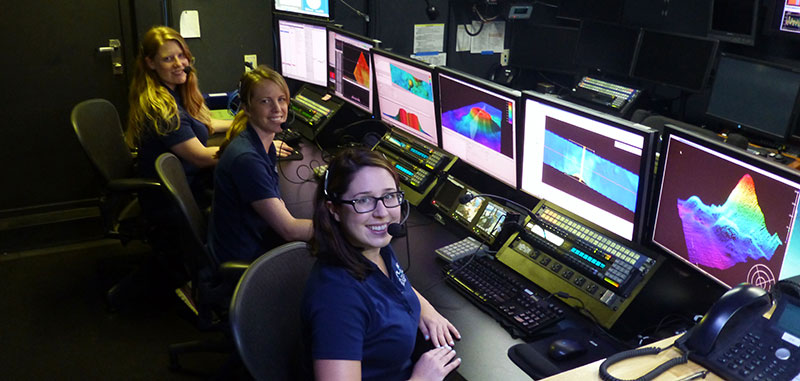2018 Explorer in Training Application Period Now Open
January 9, 2018

Abigail Casavant, Explorer-in-Training from the University of Rhode Island History and Underwater Archeology graduate program, works with OER's Kasey Cantwell and Lindsay McKenna to monitor the sonars on NOAA Ship Okeanos Explorer, clean and process files, and use specialized software to visualize seafloor features in three-dimensions.
The Explorer-in-Training application period for 2018 is now open and applications are currently being accepted for opportunities between March to September of 2018. Applications are due January 19, 2018.
The University Corporation for Atmospheric Research (UCAR) places mapping trainees to participate in the Okeanos Explorer-in-Training program. This program is open to enrolled undergraduate and graduate students as well as individuals who have recently graduated from a higher education program. The Explorer-in-Training program will provide the opportunity to gain experience using an advanced multibeam bathymetric sonar mapping system, while contributing in a significant way to the Okeanos Explorer ocean exploration mission.
A typical placement will consist of one 20- to 30-day expedition either offshore aboard NOAA Ship Okeanos Explorer and/or onshore at the University of New Hampshire Exploration Command Center in Durham, New Hampshire. Trainees stand an eight-hour mapping watch each day. The duties of mapping watch standers typically include the acquisition and processing of multibeam data and associated sound velocity profile data, as well as precise record keeping. Each trainee also completes a project of their own interest, with approval and support from experienced mapping team personnel.